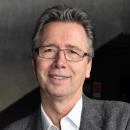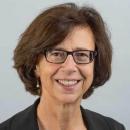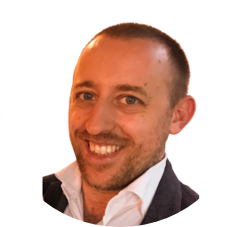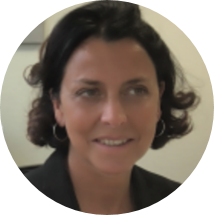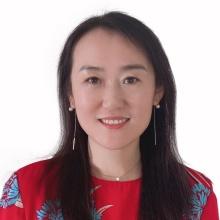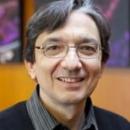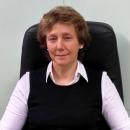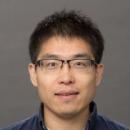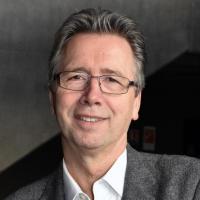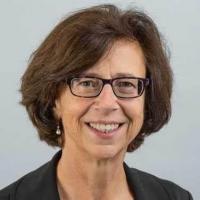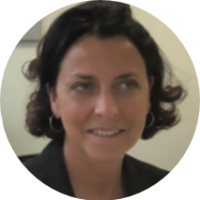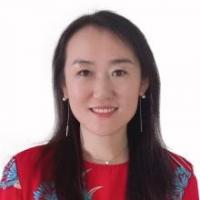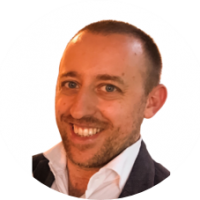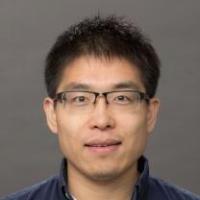Plenaries
EOSAM includes several high-level speakers from various fields of optics. We are proud to announce the following plenaries have been confirmed for EOSAM2023:
Thomas
|
Ursula
|
Fabio
|
Valentina
|
Laura
|
Jean-Pierre
|
|
Manipulating Matter by Strong Coupling to the Vacuum Electromagnetic Field
Over the past decade, the possibility of manipulating material and chemical properties by using hybrid light-matter states has stimulated considerable interest [1,2]. Such hybrid light-matter states can be generated by strongly coupling the material to the spatially confined electromagnetic field of an optical resonator. Most importantly, this occurs even in the dark because the coupling involves the zero-point electromagnetic fluctuations of the resonator, the vacuum field. After introducing the fundamental concepts, examples of modified properties of strongly coupled systems, such as magnetism, charge and energy transport, and chemical reactivity will be given to illustrate the broad potential of light-matter states.
References (reviews):
[1] F.J. Garcia Vidal, C. Ciuti, T.W. Ebbesen, Science 2021, 373, eabd336
[2] K. Nagarajan, A. Thomas, T.W. Ebbesen, J. Am. Chem. Soc. 2021, 141, 16877.
About the Speaker
Thomas W. Ebbesen is a Franco - Norwegian physical chemist. He graduated from Oberlin College (USA) and then got his Ph.D. from P. & M. Curie University in Paris. He worked at the Notre Dame Radiation Laboratory, the NEC Fundamental Research Laboratories in Tsukuba, Japan, and the NEC Research Institute in Princeton before becoming a professor at the University of Strasbourg in 1999. In 2017–2018, he held the L. Bettencourt chair for Technological Innovation at the Collège de France. He is currently the head of the Center for Frontier Research in Chemistry and the University of Strasbourg Institute for Advanced Studies. He holds the chair of physical chemistry of light-matter interactions.
Thomas Ebbesen is recognized for his contributions in very different fields of research. For his pioneering and extensive work in the field of carbon nanotubes, he shared the 2001 Agilent Europhysics Prize with Sumio Iijima, Cees Dekker and Paul McEuen. While working at NEC, Ebbesen discovered a major new optical phenomenon. He found that, contrary to the then accepted theory, it was possible to transmit light extremely efficiently through subwavelength holes milled in opaque metal films under certain conditions. The phenomenon, known as extraordinary optical transmission, involves surface plasmons. It has raised fundamental questions and is finding applications in broad variety of areas from chemistry to opto-electronics. Ebbesen has received several awards for this discovery such as the 2009 Quantum Electronics and Optics Prize of the European Physical Society. Since 2005 he has developed new field of research at the interface of quantum electrodynamics and physical chemistry. His team demonstrated for the first time that material properties such as chemical reactivity and conductivity could be modified by strongly coupling the molecules to the electromagnetic fluctuations of an optical cavity. For this work he was awarded the 2018 Grand Prix of the Maison de la Chimie foundation.
He is a member of the Norwegian Academy of Science and Letters and a foreign member of the French Academy of Science. Among other recognitions, he received the 2014 Kavli Prize in Nanoscience for his transformative contributions to nano-optics, and more recently, in 2019, the gold medal of the CNRS, which is the most prestigious French scientific prize.
Ultrafast Dual-Comb Lasers
Dual-comb molecular and pump-probe spectroscopy with equivalent time sampling are currently limited by the cost, complexity, and size of conventional optical comb systems, based on two modelocked lasers and corresponding feedback loops. The single-cavity dual-comb diode-pumped solid-state and semiconductor lasers, however, substantially reduce the complexity of existing systems to a single compact free-running laser. In comparison to other competing new approaches such as quantum cascade lasers or micro resonator combs, these dual-comb lasers provide substantially more power per comb line with low linewidth and noise, and are ideally suited for a 40 MHz to 5 GHz comb spacing. The optimal operating regime lies within this range for many different applications including spectroscopy and thin-film inspection, allowing for fast, accurate, and sensitive measurements.
About the Speaker
Ursula Keller was appointed an Associate Professor in March 1993 and in October 1997 she became a Full Professor in the Physics Department at ETH Zurich. Ursula Keller was born in Zug, Switzerland, on June 21, 1959. She received the "Diplom" in Physics from ETH Zurich, Switzerland in 1984. From late 1984 to 1985 she worked on optical bistability at Heriot-Watt University, Edinburgh, Scotland as a visiting scholar. She then earned her M.S. and Ph.D. degree in Applied Physics at Stanford University in California in 1987 and 1989, respectively. For her first year at Stanford, she held a Fulbright Fellowship, and for the following year she was an IBM Predoctoral Fellow. Her Ph.D. research demonstrated a novel high-speed optical measurement technique of charge and voltage in GaAs integrated circuits and low-noise ultrafast laser systems. In 1989, she became a Member of Technical Staff at AT&T Bell Laboratories, Holmdel, New Jersey, where she conducted research on photonic switching, ultrafast laser systems, and semiconductor spectroscopy. In March 1993 she was appointed as an Associate Professor in the Physics Department at ETH Zurich, and in October 1997 became a Full Professor.
Her research interests are exploring and pushing the frontiers in ultrafast science and technology. She invented the semiconductor saturable absorber mirror (SESAM) which enabled passive modelocking of diode-pumped solid-state lasers and established ultrafast solid-state lasers for science and industrial applications. Pushed the frontier of few-cycle pulse generation and full electric field control at petahertz frequencies. Pioneered frequency comb stabilization from modelocked lasers, which was also noted by the Nobel committee for Physics in 2005. In time-resolved attosecond metrology she invented the attoclock which resolved the electron tunneling delay and observed the dynamical Franz-Keldysh effect in condensed matter for the first time.
Her awards include the Swiss Science Prize Marcel Benoist – the “Swiss Nobel Prize”(2022), OSA Frederic Ives Medal/Jarus W. Quinn Prize (2020) – OSA’s (resp. OPTICA’s) highest award for overall distinction in optics, SPIE Gold Medal (2020) – SPIE’s highest honor, IEEE Edison Medal (2019), IEEE Photonics Award (2018), European Inventor Award for lifetime achievement (2018), two ERC advanced grants (2012 and 2018), member of the U.S. National Academy of Sciences, Royal Swedish Academy of Sciences, German Academy Leopoldina and Swiss Academy of Technical Sciences. She supervised and graduated 93 Ph.D. students, published more than 500 peer-reviewed journal publications and according to Google Scholar has an h-index of 119 with more than 50’000 citations.
https://scholar.google.com/citations?user=8B4xjdYAAAAJ&hl=en
Holographic manipulation of neuronal circuits
1Vision Institute, Sorbonne University/ CNRS UMR 7210/ INSERM UMR S968/
17, rue Moreau 75012 Paris, France
Genetic targeting of neuronal cells with activity reporters (calcium or voltage indicators) has initiated the paradigmatic transition whereby photons have replaced electrons for reading large-scale brain activities at cellular resolution. In parallel, optogenetics has demonstrated that targeting neuronal cells with photosensitive microbial opsins, enables the transduction of photons into electrical currents of opposite polarities thus writing, through activation or inhibition, neuronal signals in a non-invasive way1. These progresses have in turn stimulated the development of sophisticated wave front shaping approaches, based on computer generated holography and temporal focusing, to enable in depth “all optical” brain circuits interrogation with high spatial and temporal resolution2: an essential methodology to link neuronal circuits activity to the control of memory, learning and perception in pathological and healthy brain. Here, we will review the working principles of all-optical methods and will show few breakthrough applications where they have been used for the investigation of visual circuits in mice models.
References
1. Emiliani V, Entcheva E, Hedrich R, et al. Optogenetics for light control of biological systems. Nat Rev
Methods Prim. 2022; 2: 55.
2. Papagiakoumou E, Ronzitti E, Emiliani V. Scanless two-photon excitation with temporal focusing. Nat
Methods. 2020; 17: 571.
About the Speaker
Valentina Emiliani is a CNRS Research Director at the Vision Institute in Paris where she is the head of the Photonics Department and of the ‘Wave front engineering microscopy’ group. After her PhD in Physics (Univ. La Sapienza, Rome) After her PhD in Physics (University La Sapienza, Rome) she worked as a post doc at the Max Born Institute (Berlin) to investigate carrier transport in quantum wire by low temperature scanning near field optical microscopy. In 2000 she joined the European Laboratory for Nonlinear Spectroscopy to lead the research group: ‘High resolution microscopy’, focused on the investigation of light propagation in disordered structure by near field microscopy. In 2002 she moved to Paris at the Institute Jacques Monod to start a new interdisciplinar activity at the interface between physics and biology. Her interest was to study the role of mechanical forces on the establishment of cell polarity by optical tweezers. In 2004 she was recruited at the CNRS, to begin her project on optical control of neuronal activities with light. This project was awarded in 2005 by a European Young Investigator grant (EURYI 2005). Thanks to this grant she could move in the neurophysiology and new microscopy Laboratory at the university Paris Descartes where she formed the “Wave front engineering microscopy” group. She became research director in 2011 and in 2014, formed at Paris Descartes the research unit Neurophotonics that she directed till 2018. In 2019 she moved the group at the vision Institute in Paris where she took the lead of the photonics department.
With her group she has pioneered the use of wave-front shaping approaches for neuorsciences. Precisely, they have proposed several light shaping approaches such as computer-generated holography, generalized phase contrast and temporal focusing to sculpt the excitation volume with a shape perfectly tailored on the selected target. Combined with optogenetics and functional imaging, wave front shaping enables reaching an all-optical control of neuronal activity with unprecedent spatiotemporal precision.
Today, her research focuses on continuing to develop new and improved versions of these all-optical approaches and on using these approaches for the study of the neural circuits involved in vision using mice and zebrafish models.
She has received numerous honours, including the Prix “Coups d’élan pour la recherche française” from the Bettencourt-Shueller foundation in 2015, the Axa Chair Investigation of Visual Circuits by Optical Wavefront Shaping in 2017. In 2019 she gave the Society for Neuroscience Presidential Conference in Chicago. She obtained the ERC advanced grant, HOLOVIS in 2020. In 2021 she obtained the “Silver Medal” form the CNRS and the Maxime Dahan Prize for Innovation in Methods and Instrumentation at the Interface of Physics, Biology & Medicine. In 2022 she obtained the the Michael S. Feld Biophotonics Award.
Biomimetic photonic structures assembled by DNA
To sustain cellular functions, a cell needs to transport a variety of cargos within the complex intracellular milieu. This task is mainly carried out by molecular motors that move along filament tracks. Despite the grand challenges to fully understand how cells exactly manage to execute all their intelligent functions, construction of artificial nanosystems by taking inspiration from the working principles that cellular components follow, is undoubtedly an intellectually efficient approach.
In this talk, we will show several types of bio-inspired optical nanosystems, which can perform rotation, twisting, or swinging motions enabled by dynamic DNA nanotechnology. Our approach outlines a general scheme to build dynamic plasmonic nanoarchitectures, in which multiple optical elements can be readily reconfigured or transported to designated locations over long distances, resulting in programmed structural changes with high fidelity. Such plasmonic structures can find useful applications in different fields, ranging from optical sensing to data storage. In particular, the possibility to translocate optical elements in multiple configurations can be used to explore new approaches to encode information at high density.
About the Speaker
Prof. Laura Na LIU received her Ph. D in Physics at University of Stuttgart, Germany. She then worked as a postdoctoral fellow at the University of California, Berkeley and as a Texas Instruments visiting professor at Rice University, respectively. Before she became a professor at the Kirchhoff Institute for Physics at University of Heidelberg in 2015, she had worked as an independent group leader at the Max-Planck Institute for Intelligent Systems. In 2020, she joined University of Stuttgart and became the Director of the 2. Physics Institute.
Fabio Sciarrino
Full Professor at Physics Department of the University of Rome La Sapienza, Italy
Senior Research Fellow at the International School for Advanced Studies Sapienza, SSAS, Italy
Photonics quantum sampling machine based on hybrid integrated photonics
The past decade has witnessed a step-change in the scale, complexity, and scope of quantum information processing with photonics. Breakthroughs include photonic chips with dense co-integration of a large number of components, deterministic single photon sources with large purity, and high efficiency single photon detectors. Within this framework Boson Sampling is a computational problem that has been proposed as a candidate to obtain an unequivocal quantum computational advantage. There is strong evidence that such an experiment is hard to classically simulate, but it is naturally solved by dedicated photonic quantum hardware, comprising single photons, linear evolution, and photodetection. This prospect has stimulated much effort resulting in the experimental implementation of progressively larger devices. We will review recent advances in photonic boson sampling, describing both the technological improvements achieved and the future challenges. We will discuss recent proposals and implementations of variants of the original problem, theoretical issues occurring when imperfections are considered.
About the Speaker
Fabio Sciarrino is Full Professor at the Physics Department of the University of Rome La Sapienza and Senior Research Fellow at the International School for Advanced Studies Sapienza, SSAS. He is Principal Investigator of the Quantum Information Lab, Department of Physics, Sapienza University of Rome. His main expertise is experimental quantum optics, computation and quantum information, and foundations of quantum mechanics. In recent years his research activity has focused on the implementation of quantum information protocols via integrated photonic circuits, with particular interest for Boson Sampling, a non-universal computational model with promising characteristics to achieve the quantum supremacy regime.
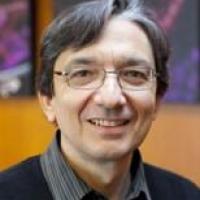 Jean-Pierre Wolf
Jean-Pierre Wolf
Professor in Physics,
Director of Applied Physics Department (GAP),
University of Geneva, Switzerland
Laser based weather control: guided lightning and fog management
Ultrafast, intense, laser pulses are able to induce a wealth of non-linear effects in the atmosphere as they propagate, such as filamentation, plasma generation, non-linear photochemistry and shock waves. The successful use of these processes for guiding natural lightning strikes and for piercing clear channels in fog for free space optical communication (FSO) is presented.
About the Speaker
Jean-Pierre Wolf studied physics at École Polytechnique Fédérale de Lausanne, where he received his diploma in 1984 and PhD in 1987. He then worked at the Free University Berlin, became full Professor at the University Lyon and then joined the University of Geneva in 2005. He then worked at the Free University Berlin, became full Professor at the University Lyon and then joined the University of Geneva in 2005. His research activities are related to applications of ultrafast spectroscopy for biological, medical, and environmental research. He now concentrates his research activities on sub-femtosecond soft-X ray spectroscopy, quantum control of biological systems and applications of laser filamentation to atmospheric control. He pioneered the field of atmospheric sensing and control using ultrashort laser pulses, as, e.g. founding member of the Teramobile project in 1999. Major breakthroughs since then include remote multipollutants and bioaerosol detection using femtosecond Lidars, water vapor condensation in droplets, transmission of optical data links through clouds and fog, and very recently the first demonstration of lightning triggering and guiding. This demonstration was achieved at the Santis Mountain within the European Project “Laser Lightning Rod” (www.llr-fet.eu), funded by the European Union. He has authored more than 280 scientific papers. He was awarded the Carl Zeiss Research Award in 2018, an ERC Advanced Grant in 2011, the Prix La Recherche 2005, the Grand Prix de Physique de l’Academie des Sciences in 2002, and the Technology Award of the Land Berlin-Brandenburg in 1993. He is member of the Institut Universitaire de France since 1996.
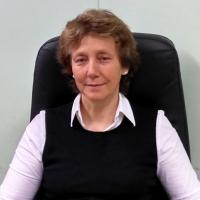 Tatiana Novikova
Tatiana Novikova
LPICM, CNRS, Ecole polytechnique, IP Paris, Palaiseau, France,
Department of Biomedical Engineering, Florida International University, Miami, USA
Winner of the EOS Prize: presenting the JEOS:RP Highlight
Optical diagnosis of gastric tissue biopsies with Mueller microscopy and statistical analysis
Authors: Myeongseop Kim, Hee Ryung Lee, Razvigor Ossikovski, Aude Malfait-Jobart, Dominique Lamarque, and Tatiana Novikova
About the Speaker
Dr. Tatiana Novikova leads the Division of Characterization and Modeling of the Laboratory of Physics of Interfaces and Thin Films, CNRS, Ecole polytechnique, IP Paris, France. She is the Courtesy Professor of the Department of Biomedical Engineering, Florida International University, Miami, USA, a recipient of 2020 SPIE G. G. Stokes Award in optical polarization, Fellow of OPTICA, Fellow of SPIE. Her research interests include optical polarization, Mueller polarimetry, biomedical imaging, optical metrology and modeling of polarized light interaction with structured and random media.
Winner of the ICO Prize in 2021
Optical bound states in the continuum, exceptional points, and other topological states in photonics
Read more: https://www.e-ico.org/blog/awards/ico-prize/

